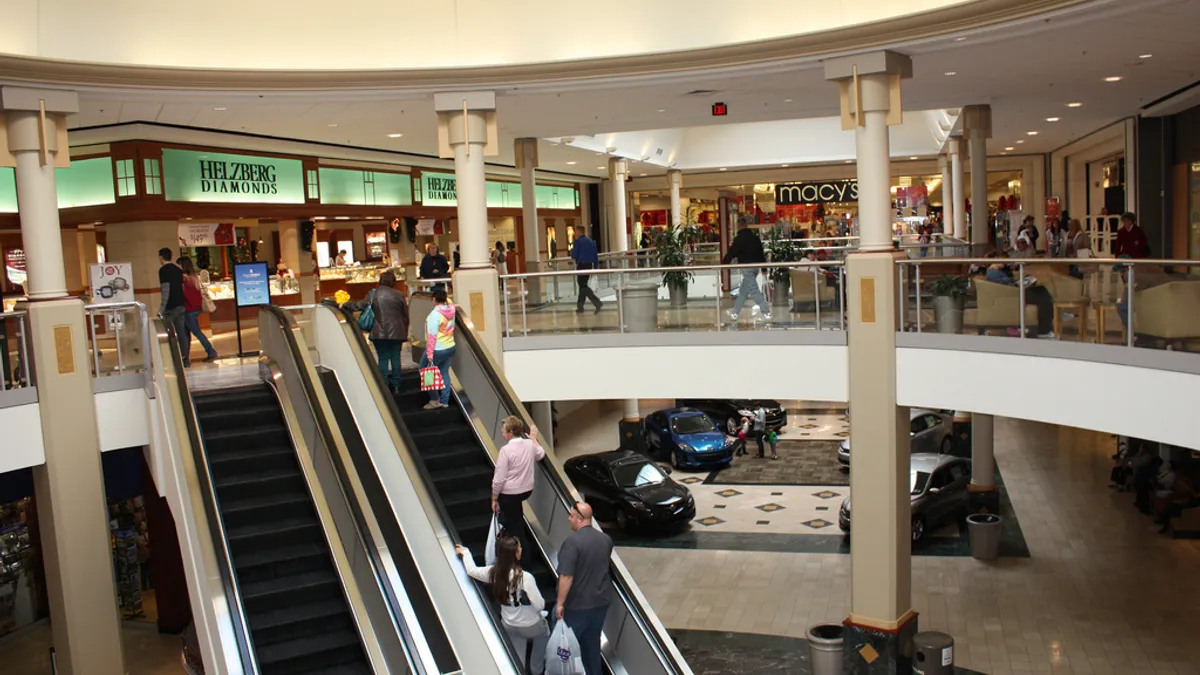Dive Brief:
-
The Galleria at Pittsburgh Mills mall in Pittsburgh, PA was sold on Wednesday for a mere $100 to the bank that foreclosed on it last year, according to the Pittsburgh Post Gazette. Wells Fargo, which is owed $142.9 million, was the only bidder to appear during the five-minute-long auction.
-
The mall had been struggling for at least two years and in December was expected to sell for $8 million; even that was less than 6% of the balanced owed to Wells Fargo, the Valley News Dispatch reported in December. An August appraisal had put its value at $11 million, according to that report.
-
The bank may invest to salvage the 1.1 million-square-foot property, which is anchored by Macy’s and Dick’s Sporting Goods, or it may turn around and sell it on its own terms. In any case, its future is uncertain. The Macy’s store there isn't among the 100 stores planned for closure, according to the department store’s most recent list.
Dive Insight:
While America currently has about 1,100 enclosed malls, retail analyst Jan Kniffen, CEO of J. Rogers Kniffen Worldwide Enterprises, said last spring that number should be closer to 700. “The top 250’ll do fine, and the rest of them are going to struggle,” he told CNBC in May.
Kniffen, like many observers, pegs the troubles of American malls to the surplus of brick-and-mortar stores in the U.S. as well as to the rise of e-commerce. Several retailers, including The Limited, Wet Seal, American Apparel and Sports Authority, have declared bankruptcy within the last year, beset by falling mall traffic among other problems.
But the fate of Pittsburgh Mills is especially curious, considering the property was designed with many of the amenities, including a cinema, that many experts say will be essential to prop up American malls. Zamias Services Inc. and Mills Corp. together developed the mall, but complications apparently arose when Mills filed for Chapter 11 protection in 2007.
“It was initially supposed to be a typical Mills [Corp.] development, which was more of an entertainment and lifestyle center,” Herky Pollock, executive vice president at real estate firm CBRE, told the Post Gazette. “Then Mills Corp. went bankrupt and took the direction toward a more regional mall."
While some aren't making the cut, that doesn't signal the end of the line for all malls. Some 90% of shopping is still done at brick-and-mortar stores, and super regional malls still have a tenancy to attract high traffic, Mark Cohen, retail studies professor at Columbia University, told Retail Dive.
“Some of these malls are being redeveloped to give them a modicum of new life. But for some, either it can’t work financially — maybe they’re no longer on the right side of the tracks — and a mall requires an enormous amount of investment," Cohen said. "There’s going to be an enormous shakeout. We’ve known forever that we have too many of these. The internet has siphoned 15% or 16% of their oxygen, and that’s not something that anybody can ignore.”












